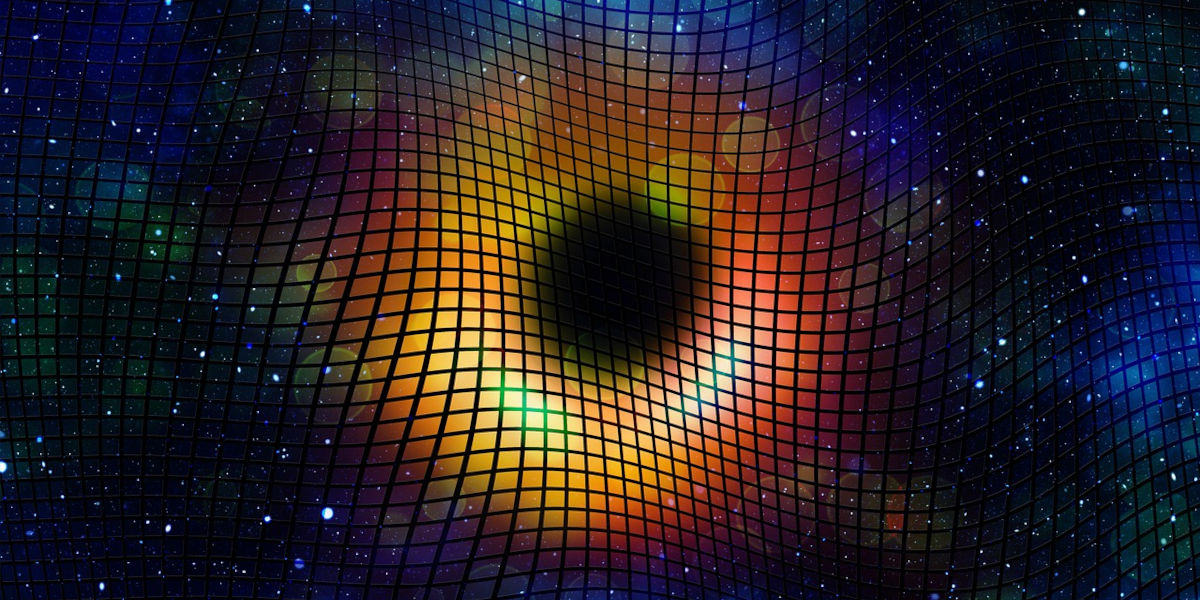As our understanding of the cosmos deepens, it's becoming increasingly apparent that the universe is far more intricate and remarkable than we could have ever imagined. One of the most captivating frontiers in modern astrophysics concerns gravitational waves and their detection. These ripples in spacetime, first predicted by Albert Einstein in his General Theory of Relativity, are not just intriguing theoretical constructs. They are veritable echoes of the universe, carrying with them information about cataclysmic events and offering tantalizing hints about the mysteries of the cosmos.
Gravitational Waves and Their Detection
Gravitational waves are distortions in the fabric of spacetime caused by powerful astrophysical phenomena such as the collision of neutron stars or black holes. When these events occur, they cause the space around them to ripple like the surface of a pond disturbed by a thrown pebble. However, unlike waves on water, gravitational waves travel at the speed of light, crossing vast expanses of space unhindered by the matter that fills it.
Detecting these waves is a challenge of epic proportions. They are incredibly weak when they reach our planet, requiring immensely sensitive equipment and ingenious methodologies. Earth-based detectors, such as the Laser Interferometer Gravitational-Wave Observatory (LIGO) and its European counterpart Virgo, use lasers and mirrors to measure minuscule changes in the distance between two points caused by a passing gravitational wave.
Effects of Gravitational Waves
While gravitational waves are invisible and their direct effects barely perceivable, their discovery has ushered in a new way of viewing and studying the universe. Astronomers can use gravitational waves as tools to probe the inner workings of cosmic events that would be otherwise inaccessible.
For example, the detection of gravitational waves from the merger of two neutron stars in 2017 not only confirmed the nature of such an event, but also highlighted the astrophysical process that forms heavy elements like gold and platinum. Gravitational waves provide a new window to see these cosmic phenomenon which can't be seen with traditional astrophysical observations.
Can Gravitational Waves Help Us See the Early Universe?
One of the foremost questions facing cosmologists is the nature of the early universe. However, gathering evidence about this era is tricky. Light from the early universe is heavily redshifted and scattered, rendering it difficult to parse. However, gravitational waves might be key to peering back in time.
Gravitational waves interact very weakly with matter, which means they can traverse the universe virtually unimpeded. Because of this, they carry with them the imprint of the events that produced them. If we can detect gravitational waves from the early universe, we might be able to glean insights about its state at the time of their emission. This could unlock new avenues of understanding for cosmologists, illuminating the nature of the universe at its very dawn.
Ever since the first light began to course its way through our universe, the cosmic dance between matter and energy has been playing out a spectacle without compare. As we gaze into the inky blackness of space, countless millions of light years away, we are not just pondering the stars, but gravitating towards the larger mysteries of our universe in the study of gravitational waves.
Gravitational waves, first posited by Albert Einstein, are wrinkles or ripples in space and time. They are generated by some of the most violent and energetic processes in the Universe: the explosion of stars, the collision of black holes, the rapid inflation of the universe moments after the Big Bang. These waves spread out from their source, puckering and stretching the fabric of reality as they go.
In our quest to pick up these subtle vibrations, scientists have turned to a piece of equipment known as the Laser Interferometer Gravitational-Wave Observatory (LIGO). Consisting of two huge antennas located thousands of miles apart, LIGO is able to capture incredibly small variations in space and time, as minute as one thousandth the diameter of a proton.
Gravitational Waves: An In-Depth Study
The measurement of gravitational waves is accompanied by a host of challenges. First among these is their incredibly weak nature. Similar to ripples spreading out when you drop a stone in a pond, gravitational waves also weaken as they spread out from their source. To conquer this issue, the mirrors in LIGO are suspended from a four-stage pendulum system that isolates them from external vibrations, allowing them to pick up the infinitesimally tiny jiggles caused by passing gravitational waves.
Another challenge is the background noise that can mask the signal of a gravitational wave. Even a car passing by a LIGO site can cause a vibration that could be mistaken for a gravitational wave. Therefore, two observatories were built to cross-verify any possible detection. If both detectors pick up the same signal at the same time, it's a good indicator that a gravitational wave has been observed.
Capturing The Echoes of the Universe's Dawn
Gravitational waves offer a fresh perspective on the cosmos. Unlike light, which can be absorbed or reflected, gravitational waves pass unhindered through matter. This allows them to carry information across cosmic distances, undistorted by intervening matter or radiation.
By studying these waves, we are effectively listening to the echoes from the earliest moments of our universe. It's akin to having a new sense; a new native language to decode the secrets of our cosmic heritage. Who knows what mysteries we'll unfurl as we delve deeper into this resonant symphony of the universe?
No one knows what the future holds, but one thing is clear. Gravitational waves continue to provide novel, exciting ways to gaze back into the annals of cosmic history. As technology advances, so too will our ability to perceive and understand these intriguing ripples in the fabric of space and time - echoes of the universe and glimpses into its dawn.




